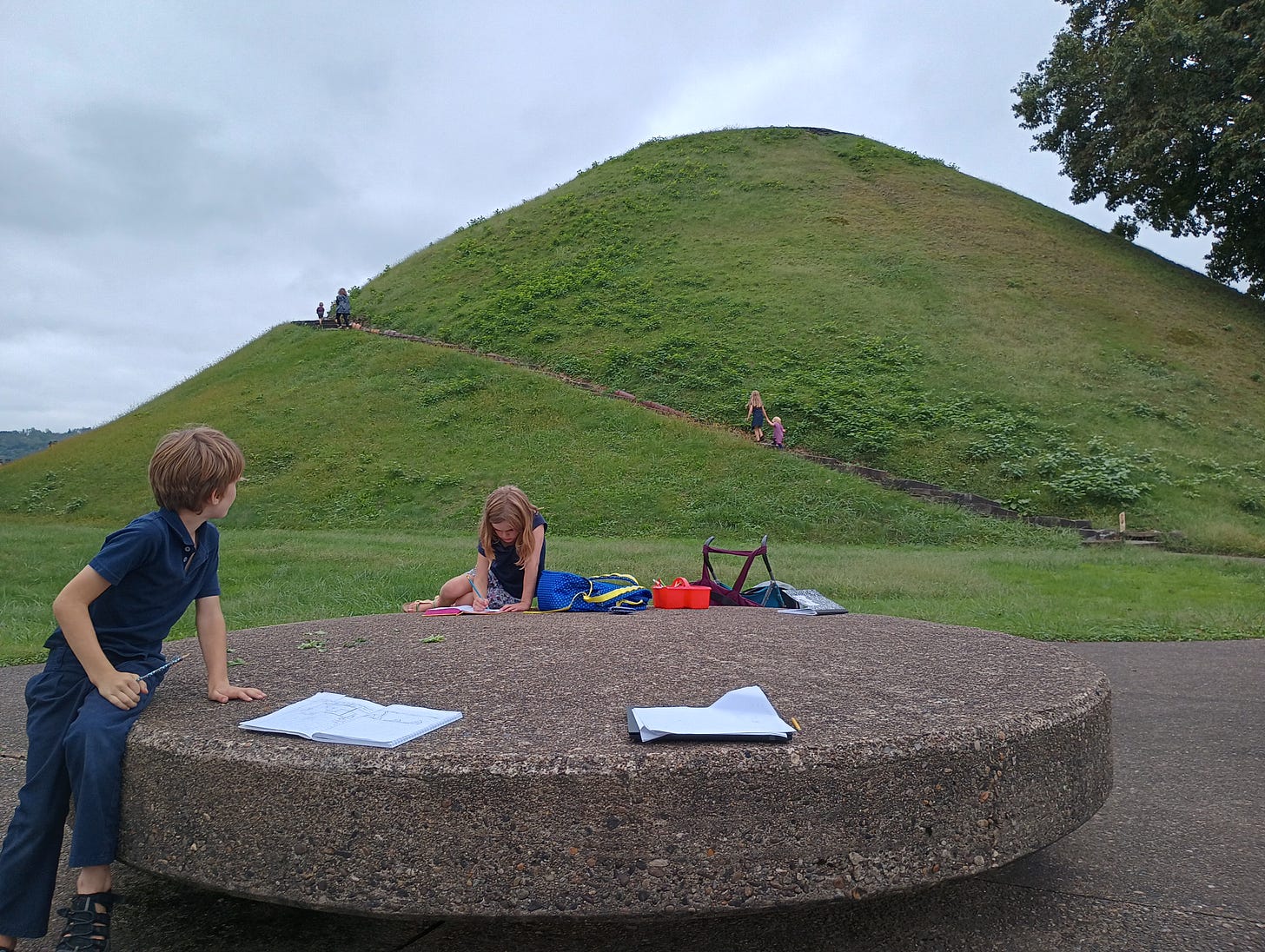One of the striking things about Ohio today is its lack of local pride. The term “Ohio” is used in our slang to mean “bad,” particularly as in “boring nothingness.” “That’s so Ohio” is not a compliment here. It was not always so. Wilbur Wright – of Wright Brothers fame – had a formula for success: “If I were giving a young man advice as to how he might succeed in life, I would say to him, pick out a good father and mother, and begin life in Ohio.” But Ohio had, in those days, legitimately made itself the center of the world, through innovation and general excellence.
A little melancholy I can take. But there is no way I am going to raise my kids to be downtrodden or to think that life is somewhere else. This is a problem that good religion can solve. The word translated as “neighbor” in the New Testament commandment “love your neighbor as yourself” is the adjective plesion, which just means someone (or something) near you. In Latin it is proximum, the person who is closest. That’s where love belongs. It should not be transferred to “the nearest faraway place.” We want our love to put down roots. It’s the principle of the bookshop too: we work every day to make our bookshop a place we love. If you love something long enough, it will become great. Chesterton in describing Rome describes how it works for all places: “Men did not love Rome because she was great. She was great because they had loved her.”
This is also part of the education we are attempting to give our children. The excellent Catholic Montessori school our kids attended closed down last year. This year we are homeschooling the kids, and part of our instruction is a local history curriculum of my own design.
We have just now arrived at the French and Indian War, after spending the first two months of the school year on Ohio history prior to the arrival of Columbus. The results have been spectacular.
We went to the Grave Creek Mound in Moundsville. I had been there before, but seeing it again convinces me that this is probably the best archaeological site in the United States – only Mesa Verde can compare, really. The mound is mysterious and evocative – Native Americans knew nothing of it by the time European settlers arrived. It looms out of prehistory, a mute witness to our species’ capacity for creation. You can climb to the top, where there is a satisfying view – you’re on top of a six-storey building! And there is an excellent museum adjacent to the place. You’re also right in the middle of the city of Moundsville, and can walk to restaurants and houses.
The Rock Shelter in Union Cemetery in Steubenville made another excursion. Once again we have access to an archaeological site – spearheads representing thousands of years of slow cultural change have been found here – which is also a remarkable experience. The rock shelter sits high above a confluence of a small freshet and a creek, with beautiful woodland views in three directions. It’s a perfect place to hunt – and the overhang provides convenient shelter from the weather.
Just a few days ago we went to the mouth of Yellow Creek, where Logan, an important English ally in the French and Indian War, had his family massacred by Virginia settlers, touching off a series of skirmishes that go by the name Dunmore’s War. A monument marks the spot.
Much more is coming: we’ll be studying the assault on Fort Duquesne and the founding of Pittsburgh; visit Washington’s Crossing on the Ohio; follow Zane’s Trace and the National Road; discuss slavery, the Underground Railroad, and Harriet Beecher Stowe’s house; visit the site where Lincoln visited Steubenville and discuss Stanton, his war secretary; visit Wheeling, the capital of the new state of West Virginia after it had seceded from Virginia; then into the industrial revolution and coal and steel and railroads and manufacturing; Thomas Edison and the Wright Brothers; the tank factory at Lima; John Glenn’s house; etc. All while learning the local flora and fauna and geology here, and how nature shaped history. I enjoy the excitement of it. Perhaps when I’m done I’ll have a little book of Ohio history for children, and I’ll have given my kids a thousand reasons to take an interest in Ohio and be proud of it.
Localism has to be part not only of how we eat and shop and work, but how we teach. I hear many homeschooling parents using curricula that sound like they could be used anywhere. I don’t want that. I want them to love what is near and what is closest.







Me, too!